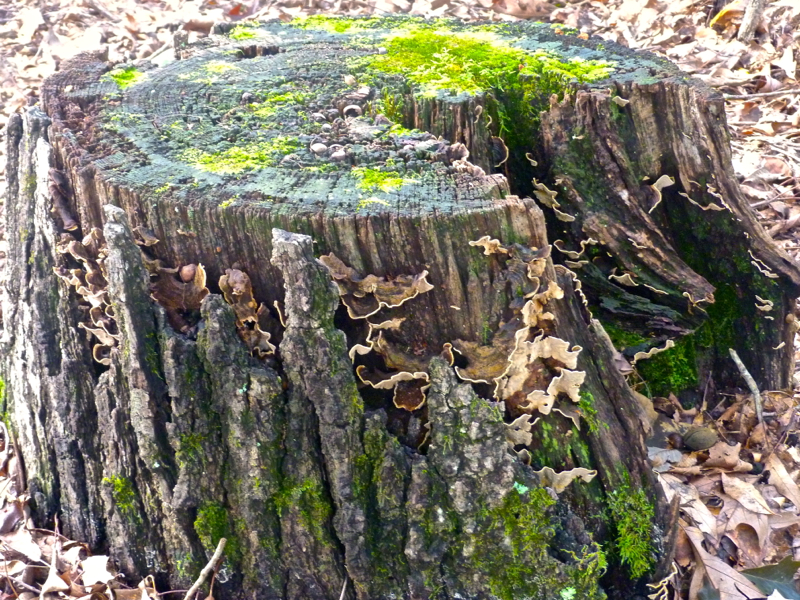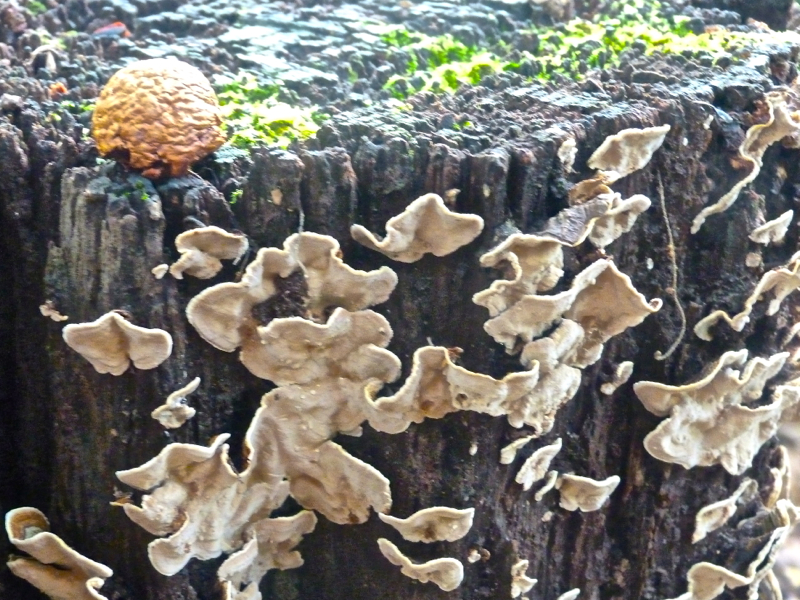A fantastic world thrives a few steps down the hill from the patio, overlooked and unappreciated. A massive oak outside our kitchen was toppled by the tornado that tore through our property in 1990. We counted the rings and estimated the tree had been growing over 120 years. We cut the trunk into sections and rolled them to an out of the way place in the woods. Since then they have rested there, silently rotting away without intervention.
Neglected by humans, but not by other species.
Most of the sections are gone now, returned to the earth as all life forms eventually go, but a couple of the larger pieces remain. Recently some bright colors in the area caught my attention, and I walked over to see. I was amazed at the dead wood, heaving with life.
Fungi, moss, and lichen cover the stumps. They are working along with bacteria and other microscopic organisms to decompose the wood. Meanwhile, all sorts of bugs — beetles, spiders, snails, ants and countless others — find shelter and food within the crevices of the wood, and they themselves become food for birds and other wildlife. Pieces of acorns and seeds are scattered across the surface, leftovers dropped by birds and squirrels who use the site as their dining hall. Other creatures use the stump tops for basking and sun bathing or for watching over their territory, while conditions beneath and inside the wood are cool and moist, creating the perfect habitat for newts and salamanders.
I watched as a ground squirrel hurried by. I think the huge chunks of wood also serve as landmarks for little forest animals as they navigate through the woodlands: Turn right at stump world, then take the second tree to the left.
So my old tree, to the end of its existence, is useful to countless thousands of species, in death as in life; and when its remnants have decayed into the ground, even then the lingering nutrients will nourish the soil. A little acorn may take root there, and the cycle of life will begin again.